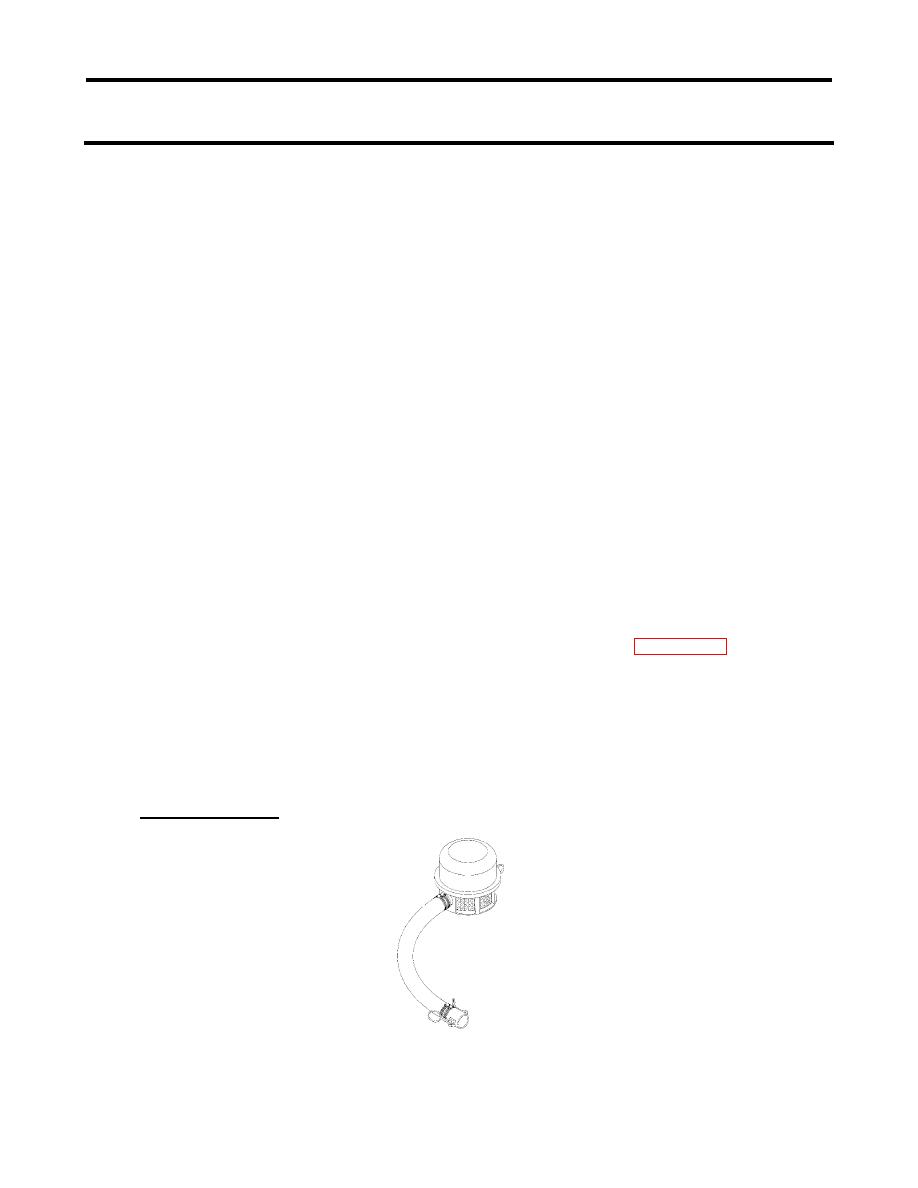
TM 10-4610-310-14
OPERATOR, UNIT, DIRECT AND GENERAL SUPPORT MAINTENANCE
LIGHTWEIGHT WATER PURIFIER
THEORY OF OPERATION
PURPOSE AND INTENDED USE
The U.S. Army requires the ability to produce a safe, reliable supply of potable water to support early entry,
highly mobile forces across a spectrum of missions, entailing everything from humanitarian aid to limited
conflicts or total war. The Lightweight Water Purifier (LWP) provides quality water support to small units and
detachments where distribution of bulk water is not feasible, necessary, or practical. The LWP provides this
water support without committing larger water production assets from the logistics support structure. It tailors
water production flow rates to the demands of independent special operations forces, detachments, and units
typically engaged in remote site missions.
The LWP is capable of purifying, storing, and dispensing water meeting Tri-Services Field Water Quality
Standards for long-term consumption. Potable water is produced at a minimum rate of 125 gallons per hour
from a fresh water (less than 20, 000 ppm source water) and 75 gallons per hour from a seawater (at or above
20,000 ppm source water). The system includes a potable water dispensing capability that interfaces with
military fixed holding tanks. In addition, the LWP is capable of purifying Nuclear, Biological, and Chemical
(NBC) contaminated source water as well as chlorinated source water.
The LWP removes suspended solids (called turbidity), chemicals, and solids in solution [called Total Dissolved
Solids (TDS)] that are found in most fresh water and seawater sources to a level meeting the Tri-Service Field
Water Quality Standards. This process is by filtering, reverse osmosis, and disinfection. Activated carbon and
ion exchange process are also used when treating chemical and nuclear contaminated waters.
See FM 10-52 for water supply in theaters of operations and FM 10-52-1 for water supply point equipment and
operations.
SYSTEM DESCRIPTION
The LWP utilizes the Ultrafiltration (UF) membranes for primary pre-filtration and Reverse Osmosis (RO)
process to produce potable water from virtually any raw water source.
The LWP is comprised of five modules, one Basic Issue Item (BII) box, one Components of End Item (COEI)
box, two collapsible fabric water tanks, and associated equipment. Refer to WP 0002 00 for equipment
descriptions.
WATER FLOW PROCESS
Water is processed as follows:
A 3kW Tactical Quiet Generator is used as the primary source of power supply. The generator must be set up in
accordance to TM 9-6115-639-13.
1. Raw Water Strainer
Figure 1. Raw water strainer.
The raw water strainer is anchored in location by tying a sand bag provided in the BII box to it. A carabiner is
used to allow some play of the strainer. The strainer should draw water from just beneath the surface to avoid


